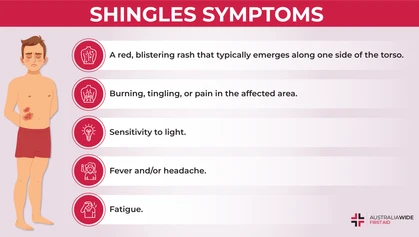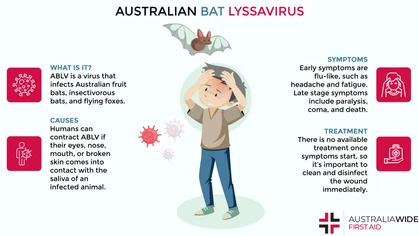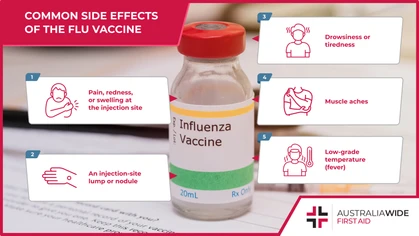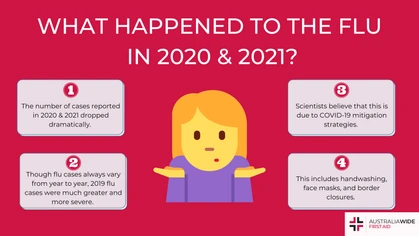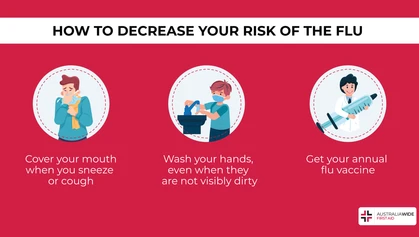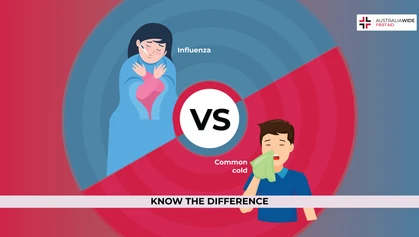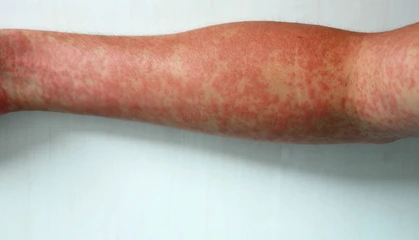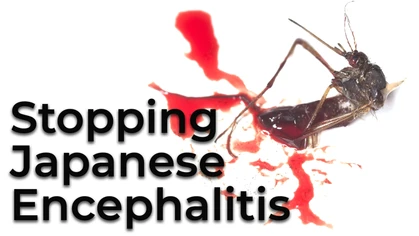What Ingredients are in a Flu Vaccine ?

Virus

Vaccines are design to stimulate the production of antibodies to provide immunity against an infectious disease. Flu vaccines comprise inactive versions of flu viruses, and a variety of ingredients that enhance their purity, potency, and effectiveness.
A vaccine is a biological substance that contains an agent, which stimulates the production of antibodies to provide active acquired immunity against an infectious disease. Influenza (flu) vaccines produced in Australia contain inactive versions of flu viruses, as well as a host of other ingredients that are designed to safeguard the vaccine's potency, purity, and effectiveness. Today, we are going to take a closer look at how flu vaccines are developed, and what they comprise. That way, you can take proactive steps against the flu, and receive the flu vaccine, without concern.How are Flu Vaccines Developed?
Influenza viruses can change their surface structure on a regular basis. As such, they can re-infect people who were thought to be immune to the infection due to a previous bout of the flu, or a previous flu vaccine. Consequently, new vaccines must be developed on a regular basis to account for new strains of the flu virus. To kickstart this process, the Australian Influenza Vaccine Committee reviews data related to:- The epidemiology and antigenic and genetic characteristics of recent influenza isolates circulating in Australian and the Southern Hemisphere. In this instance, epidemiology refers to the study of the incidence, distribution, and possible control of health conditions. Antigenic, meanwhile, refers to any substance that causes the body to make an immune response, while genetic refers to the origin, development, and causal precursors of a health condition.
- Serological responses to vaccines from the preceding year. Serological refers to the scientific field of serology, which tests blood serum for the presence of antibodies and other immunological properties.
- The availability of candidate vaccines viruses (CVVs) and reagents. CVVs are viruses that have the required antigenicity to match circulating flu strains, and that grow better than wild-type flu viruses. Wily-type viruses are viruses that circulate in nature but do not thrive in laboratory conditions. Reagents, meanwhile, are used to test the potency of CVVs.
Flu Vaccines in 2021
According to the Australian Influenza Surveillance Report (AISR) for the fortnight ending 7 November 2021, 67.7% of flu cases reported in the 2021 flu season were caused by the influenza A strain. Of these cases, 95.8% were caused by influenza A(unsubtyped), 3.0% were caused by influenza A(H3N2), and 1.2% were caused by influenza A(H1N1)pdm09. According to the TGA, the A(H1N1) strain and the A(H3N2) strain were considered ‘new’, as they differed from the composition of the quadrivalent vaccines produced for Australia’s 2020 flu season. Quadrivalent vaccines are intended to stimulate an immune response against four different antigens. Quadrivalent flu vaccines, in particular, are designed to protect against four different flu viruses: two influenza A viruses and two influenza B viruses. As such, the quadrivalent vaccines produced for the 2021 flu season were designed to protect against the new strains of A(H1N1) and A(H3N2), as well as influenza B viruses of Victoria and Yamagate lineage. This was important, as Influenza B viruses accounted for 21.9% of flu cases reported in 2021, while influenza A and B co-infections accounted for an additional 3.5%. It is worth noting, 'unsubtyped' flu strains are not new. Rather, 'unsubtyped' is a term given to confirmed cases of Influenza A that have not been subtyped.Flu Vaccines in 2022
Per the latest Australian Influenza Surveillance Report (AISR) from the 2022 flu season, 98.7% of flu cases reported in this year’s flu season can be attributed to influenza A. Of these cases, 94.2% have been caused by influenza A(unsubtyped), 1.2% have been caused by influenza A(H1N1), and 4.7% have been caused by influenza A(H3N2). Meanwhile, influenza B and influenza A and B co-infections have each accounted for less than 0.1% of notifications. According to the TGA, there is a new A(H3N2) strain and a new B Victoria strain rolling around the community this season. As such, the quadrivalent vaccines developed for the 2022 flu season are intended to protect against these new strains, as well as strains similar to A(H1N1) and influenza B viruses of Yamagate lineage.Other Ingredients in Flu Vaccines
As well as flu strains, flu vaccines comprise other ingredients, including:- Egg Proteins: Many flu vaccines, including quadrivalent flu vaccines, are made by growing and replicating flu viruses inside fertilised chicken eggs. Though manufacturers ultimately separate the virus from the egg before adding it to the vaccine, small traces of egg proteins may still remain.
- Preservatives: Manufacturers add the preservative thimerosal to flu vaccines to prevent the growth of bacteria and fungi. Thimerosal comes from an organic form of mercury called ethylmercury, which does not remain in the body and cannot cause illness in large doses.
- Formaldehyde: Formaldehyde is a natural compound that is normally made in the body as a product of healthy digestive function. It is added to flu vaccines to inactive toxins from viruses and bacteria, including the flu virus. Though formaldehyde is toxic in high doses, it is only present in flu vaccines in harmless, residual amounts.
- Stabilisers: Stabilisers like gelatin and monosodium glutamate (MSG) are added to flu vaccines in small amounts to prevent them from losing their potency when exposed to heat and light. Stabilisers also protect flu vaccines from the damaging effects of freeze drying.
- Antibiotics: Antibiotics like neomycin and gentamicin are added to flu vaccines in trace amounts to stop the growth of bacteria. Both neomycin and gentamicin are common ingredients in many topical medications like lotions, ointments, and eye drops.
Conclusion
New flu vaccines are developed each year to account for fresh strains of the flu virus. As well as containing relevant flu strains, flu vaccines comprise numerous ingredients that aid their development, purity, and efficacy. People who receive the flu vaccine can still catch the flu, as the flu vaccine may not protect against all the flu viruses circulating in the community. As such, it is important to book a first aid course so you can learn how to identify and manage flu symptoms.
Originally published at
https://www.australiawidefirstaid.com.au/resources/what-is-in-a-flu-vaccine
as part of the Australia Wide First Aid Articles Library
